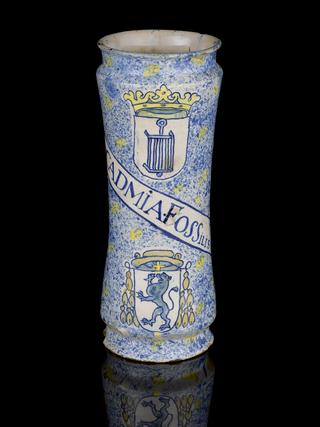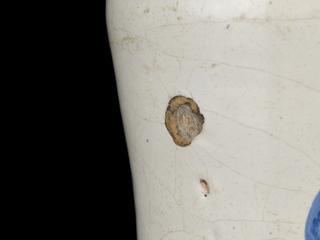












Pharmacy leech jar, marbled and gilt earthenware, perhaps Staffordshire, English, 1830-1870
Leeches were used in bloodletting – a practice once carried out to treat a wide range of diseases and medical conditions. This jar was used to hold leeches which would have been on sale to medical practitioners. They are a type of worm with suckers at both ends of the body although only the frontal sucker, which has teeth, is used to feed. Once attached to a living body, they feed on blood. They can live for quite a while between meals, so the lid has holes in the top to allow air into the jar.
Leeches were such a popular treatment that by 1830 their demand outstripped the supply. Leeches are again being used today following plastic and reconstructive surgery as they help restore blood flow and circulation.
Look closer
Pharmacy Leech JarDetails
- Category:
- Medical Ceramic-ware
- Collection:
- Sir Henry Wellcome's Museum Collection
- Object Number:
- A637617
- Materials:
- earthenware, fine grained
- Measurements:
-
overall: 360 mm x 240 mm x 240 mm, 3.43 kg
- type:
- leech jar
- credit:
- Loan, Wellcome Trust




